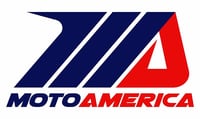 Of the two contact patches above (left and middle image), which has the most grip? The one in the middle, with more rubber touching the road. At right, the contact patch of a bike at a healthy lean angle.
Of the two contact patches above (left and middle image), which has the most grip? The one in the middle, with more rubber touching the road. At right, the contact patch of a bike at a healthy lean angle.
QUESTION: I believe you’ve gotten the physics incorrect in your “Control the Contact Patch” sidebar (“The Pace 2.0” by Nick Ienatsch). A bigger contact patch does not give a tire more resistance to sliding: The force of friction is proportional to the normal force (F=mu x N), where F is along the surface and N is perpendicular to it, and mu is the coefficient of (static) friction.
The force of friction parallel to the road surface (“grip”) is equal to the coefficient of static friction times the normal force, which is the weight on the tire. If the size of the contact patch alone caused greater friction, then putting a wider tire on a motorcycle would automatically give more grip. It doesn’t.
Owen Hayes
Philadelphia, Pennsylvania
ANSWER: Amonton’s Law for physics describes the behavior of many elastic solids. Friction is directly proportional to the area of actual contact between the two solids, which is normally only a small percentage (like five percent) of the apparent area of contact.
If the solids have linear elasticity, then doubling the force pressing the two surfaces together will double the area of actual contact, and that, in turn, will double the frictional force required to slide one across the other. Linear elasticity is essentially the same as saying the material has a constant, rather than progressive spring rate.
Rubber does not display linear elasticity. Instead, it has a “rising spring rate.” An applied light load pushes a lot of rubber into actual contact. When that load is doubled, you do not get doubled area of actual contact because the rubber is stiffening. A better strategy, therefore, is to double the area of apparent contact. With tires, this is the footprint area. This is why the tires of racing cars are so extremely wide.
Nick writes about what goes on as the rider transitions from braking to throttle in mid-corner and the importance of maintaining the size of the footprint by never allowing the tire to significantly unload. Being the weird material it is, rubber sliding on an uncontaminated glass surface can produce friction as high as 10 times the applied load. If this could be achieved on highway or racetrack, riders would be dragging their faceshields.
Got a mechanical or technical problem with your beloved ride? Ask Kevin at cwservice@cycleworld.com with your questions. We cannot guarantee a reply to every inquiry.











/cloudfront-us-east-1.images.arcpublishing.com/octane/EJJ2JBBSEZAWLFCRDALQOIBFVU.jpg)
/cloudfront-us-east-1.images.arcpublishing.com/octane/WVYKJFMINVFMFH37AE4OUEWVIM.jpg)

/cloudfront-us-east-1.images.arcpublishing.com/octane/JJ3MC6GNDFF5ZNYD3KD3E4EY7Y.jpg)
/cloudfront-us-east-1.images.arcpublishing.com/octane/XH2ETEU4NVGDFNQO2XT2QQS5LU.jpg)
/cloudfront-us-east-1.images.arcpublishing.com/octane/UFG652C27BDBFPK42TDAJ5CMX4.jpg)
/cloudfront-us-east-1.images.arcpublishing.com/octane/AUE3NFVRRZDSBIDVUGIYIDQNUI.jpg)
/cloudfront-us-east-1.images.arcpublishing.com/octane/LYR62CH2WNBMHJJVXVATZHOUE4.jpg)
/cloudfront-us-east-1.images.arcpublishing.com/octane/RBCTRGBQYBDK7A6XPG3HKPS7ZQ.jpg)
/cloudfront-us-east-1.images.arcpublishing.com/octane/MQXQRYMZVBCWJIRYP3HEN3SHVE.jpg)
/cloudfront-us-east-1.images.arcpublishing.com/octane/TSPODNNEWRDSVJGUCNQTDG4ADI.jpg)
/cloudfront-us-east-1.images.arcpublishing.com/octane/X5TB7BDV4BA2RPSY54ZGK27RP4.jpg)
/cloudfront-us-east-1.images.arcpublishing.com/octane/REUHOJXRDBGZ5IHBYZCCBCISPA.jpg)
/cloudfront-us-east-1.images.arcpublishing.com/octane/52LGJTCKBFEHDF7S7H4CVUIMGM.jpg)
/cloudfront-us-east-1.images.arcpublishing.com/octane/YMWAIPIPSJAOXOU3QMJMGH37OM.jpg)


/cloudfront-us-east-1.images.arcpublishing.com/octane/EJ6KZRGAYBCVXNL2PJXL37UVWQ.jpg)
/cloudfront-us-east-1.images.arcpublishing.com/octane/AAN4TI76M5H5JMUVEIGASWXBDU.jpg)
/cloudfront-us-east-1.images.arcpublishing.com/octane/P3RXD2UCPFF37CMB7CHPVKXORY.jpg)
/cloudfront-us-east-1.images.arcpublishing.com/octane/VZEG2EJI2RDFZNHLRZMU56MD3Q.jpg)
/cloudfront-us-east-1.images.arcpublishing.com/octane/GVJQO5FFOFBWNGODOBRB4FBAW4.jpg)
/cloudfront-us-east-1.images.arcpublishing.com/octane/BIVAK2SFIBDJJM25E7I5VU2FJE.jpg)
/cloudfront-us-east-1.images.arcpublishing.com/octane/CH5VX52UG5CFHOVH5A6UYEFWWA.jpg)